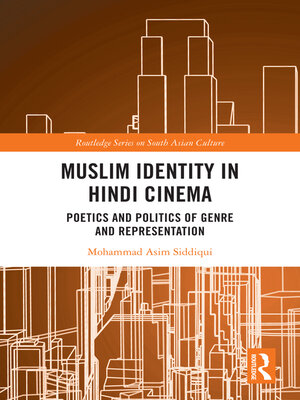Muslim Identity in Hindi Cinema
ebook ∣ Poetics and Politics of Genre and Representation · Routledge Series on South Asian Culture
By Mohammad Asim Siddiqui

Sign up to save your library
With an OverDrive account, you can save your favorite libraries for at-a-glance information about availability. Find out more about OverDrive accounts.
Find this title in Libby, the library reading app by OverDrive.



Search for a digital library with this title
Title found at these libraries:
| Library Name | Distance |
|---|---|
| Loading... |
This book examines the representation of Muslim identity in Hindi films by focusing on different aspects of Muslim identity - historical, cultural, and linguistic - and their realisation in cinematic form.
The book assesses the changing perceptions of Muslim identity, beginning from the historical films of the 1940s to the more recent films which often address the current stereotypical notions of Muslim identity in the post-9/11 world and in particular, analyses films which treat the problematic of "global Muslim identity". It argues that genre, language, and various sign systems create understandings and mediate notions of identity. Offering a close reading of films belonging to different genres - Muslim social, action thriller, gangster, biopic, and many others - the book interrogates concepts of social diversity, tokenism, marginality, and their reflection and consolidation in Hindi films. It critically looks at the representation of Muslim women characters and the politics of interfaith romances in many films. The book also reads many films which probe Partition violence, communal riots and the international discourse on terror. It also touches on the evolution of the language of Hindi films and its role in creating a lingua franca uniting diverse and variegated groups of people in India. Drawing insights from new critical close reading, deconstruction, semiotic and discourse analysis, the book also offers a close reading of a few films in each chapter, which offer important insights into Hindi cinema.
This book offers a unique and comprehensive analysis of the political and representational aspects of Hindi cinema, portrayal of Muslims in popular arts, and the debates and politics over the use of Hindustani in India and its identification with religious and communitarian identity. It will be of interest to researchers studying world cinema, Hindi cinema, sociology and Asian studies.







